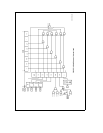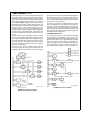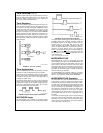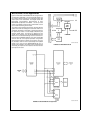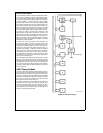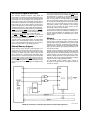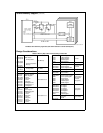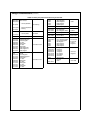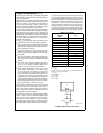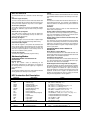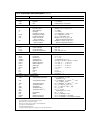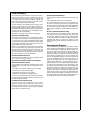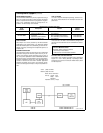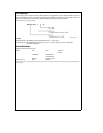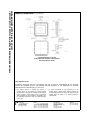
Code Efficiency
One of the most important criteria of a single chip microcon-
troller is code efficiency The more efficient the code the
more features that can be put on a chip The memory size
on a chip is fixed so if code is not efficient features may
have to be sacrificed or the programmer may have to buy a
larger more expensive version of the chip
The HPC family has been designed to be extremely code-
efficient The HPC looks very good in all the standard cod-
ing benchmarks however it is not realistic to rely only on
benchmarks Many large jobs have been programmed onto
the HPC and the code savings over other popular micro-
controllers has been considerable
Reasons for this saving of code include the following
SINGLE BYTE INSTRUCTIONS
The majority of instructions on the HPC167064 are single-
byte There are two especially code-saving instructions JP
is a 1-byte jump True it can only jump within a range of plus
or minus 32 but many loops and decisions are often within
a small range of program memory Most other micros need
2-byte instructions for any short jumps
JSRP is a 1-byte subroutine call The user makes a table of
the 16 most frequently called subroutines and these calls
will only take one byte Most other micros require two and
even three bytes to call a subroutine The user does not
have to decide which subroutine addresses to put into the
table the assembler can give this information
EFFICIENT SUBROUTINE CALLS
The 2-byte JSR instructions can call any subroutine within
plus or minus 1k of program memory
MULTIFUNCTION INSTRUCTIONS FOR DATA MOVE-
MENT AND PROGRAM LOOPING
The HPC167064 has single-byte instructions that perform
multiple tasks For example the XS instruction will do the
following
1 Exchange A and memory pointed to by the B register
2 Increment or decrement the B register
3 Compare the B register to the K register
4 Generate a conditional skip if B has passed K
The value of this multipurpose instruction becomes evident
when looping through sequential areas of memory and exit-
ing when the loop is finished
BIT MANIPULATION INSTRUCTIONS
Any bit of memory IO or registers can be set reset or
tested by the single byte bit instructions The bits can be
addressed directly or indirectly Since all registers and IO
are mapped into the memory it is very easy to manipulate
specific bits to do efficient control
DECIMAL ADD AND SUBTRACT
This instruction is needed to interface with the decimal user
world
It can handle both 16-bit words and 8-bit bytes
The 16-bit capability saves code since many variables can
be stored as one piece of data and the programmer does
not have to break his data into two bytes Many applications
store most data in 4-digit variables The HPC167064 sup-
plies 8-bit byte capability for 2-digit variables and literal vari-
ables
MULTIPLY AND DIVIDE INSTRUCTIONS
The HPC167064 has 16-bit multiply 16-bit by 16-bit divide
and 32-bit by 16-bit divide instructions This saves both
code and time Multiply and divide can use immediate data
or data from memory The ability to multiply and divide by
immediate data saves code since this function is often
needed for scaling base conversion computing indexes of
arrays etc
Development Support
The HPC167064 acts as a stand alone emulator for either
the HPC16083 or the HPC16064 No separate development
tool is thus provided to support this emulator device The
user will use either the HPC16083 or the HPC16064 (de-
pending on which device is in use) development tools to
develop and debug the application hardware and software
in their target as normally done for the non-emulator HPC
devices The application software can then be programmed
in the on-chip EPROM and the HPC167064 can then be
plugged in the target system to run the application like a
regular masked ROM device The HPC167064 can be pro-
grammed using a DATA IO UNISITE with pinsite module
To support the security feature of the HPC167064 a soft-
ware switch is provided with the linker (under PROMHPC)
which will generate an encrypted hex file for the user The
purpose is to be able to compare this software generated
encrypted data with the encrypted data produced by the
actual chip to provide a way to verify on-chip EPROM code
after security has been enabled For details of how to gener-
ate encrypted data and all other HPC167064 features refer
to the Appendix K of the HPC Family User’s Manual
30



